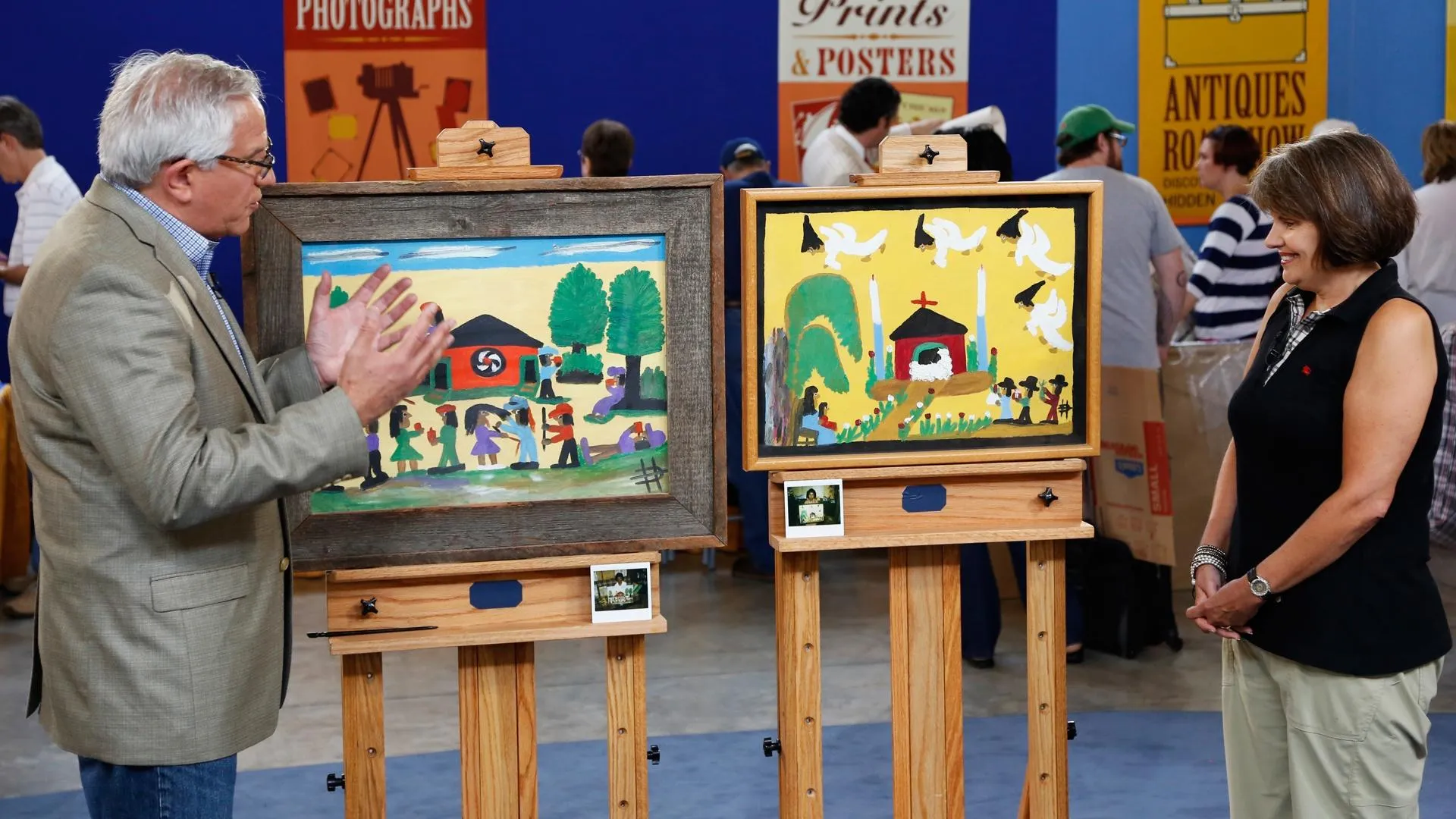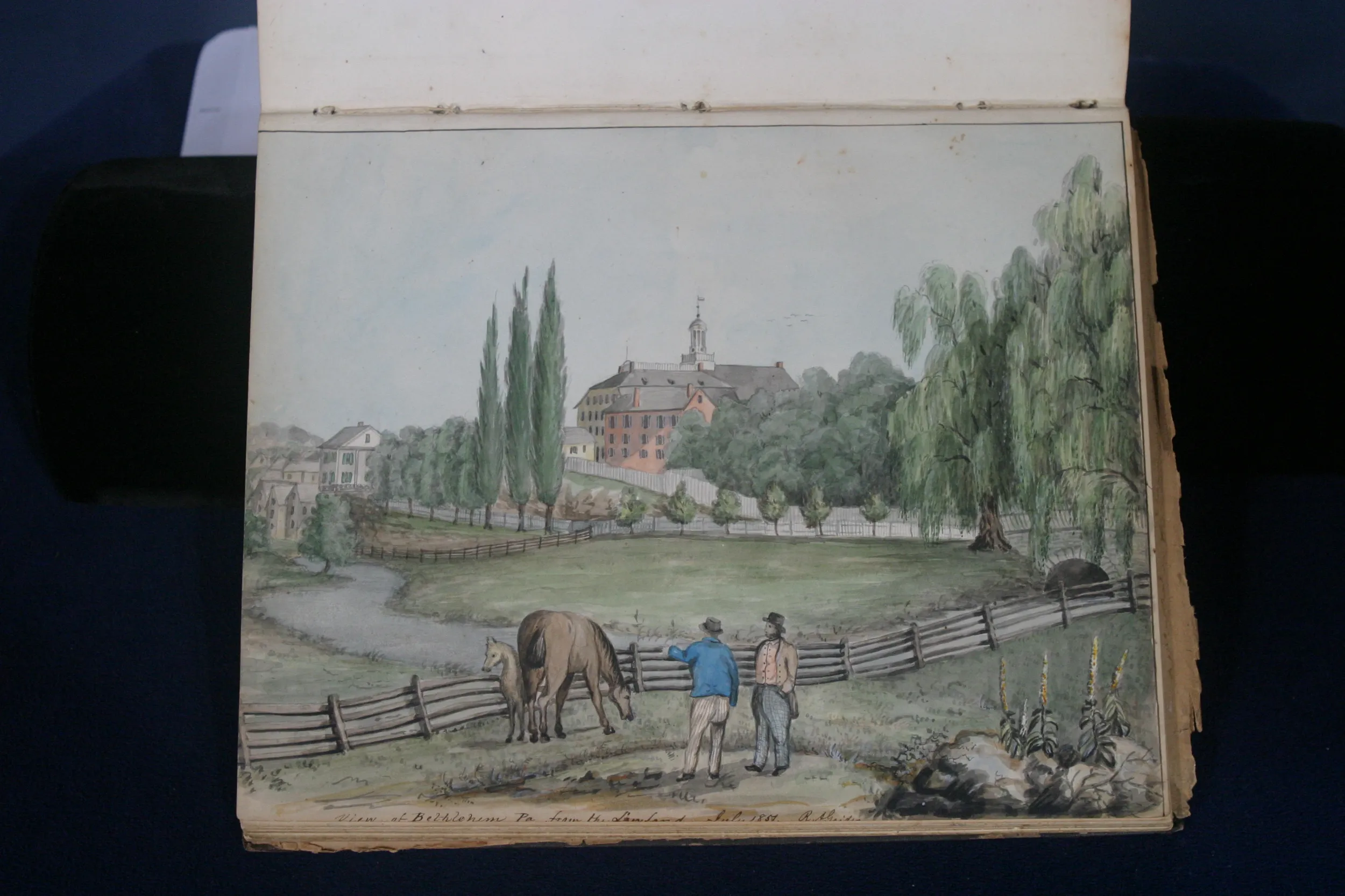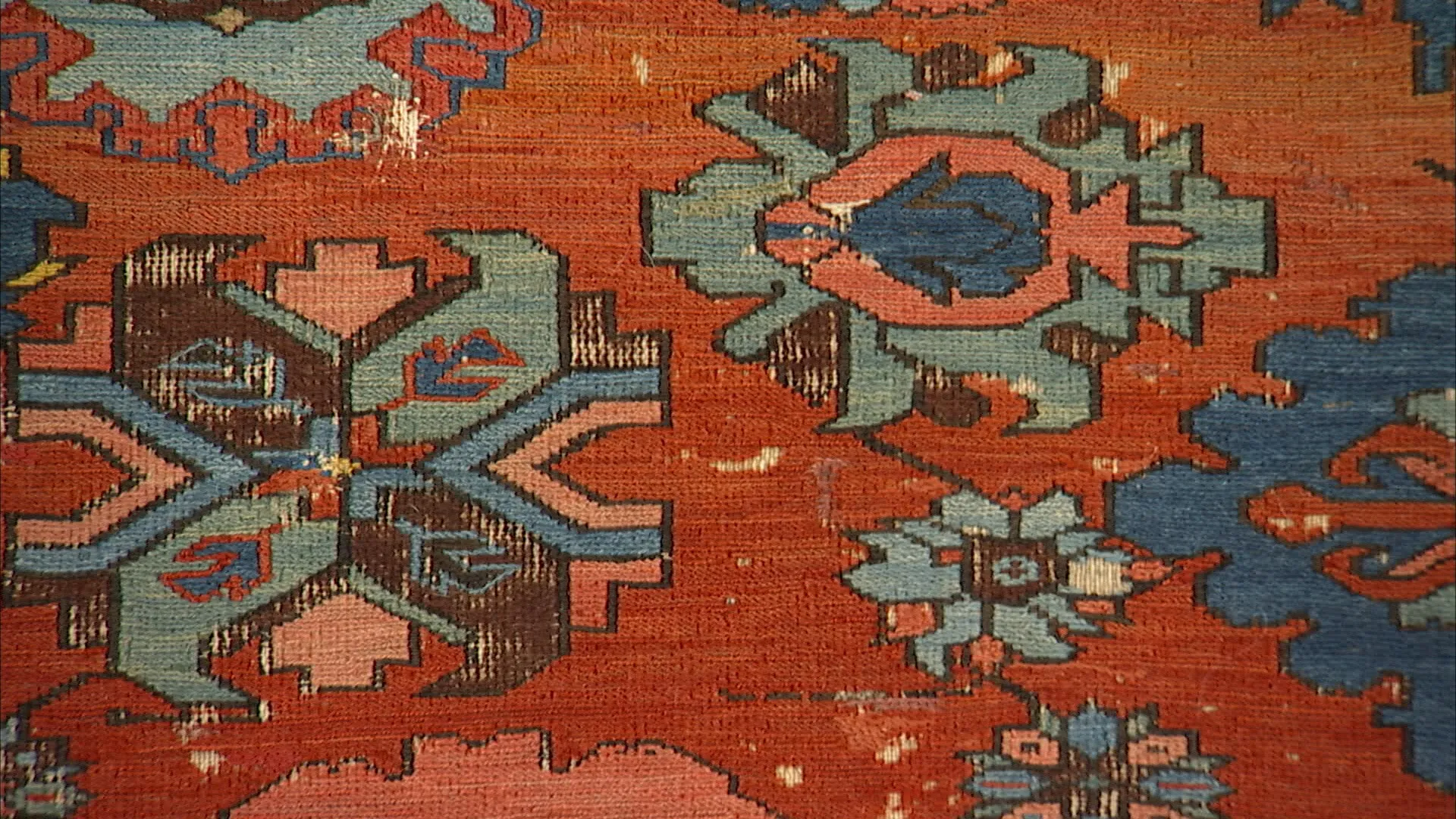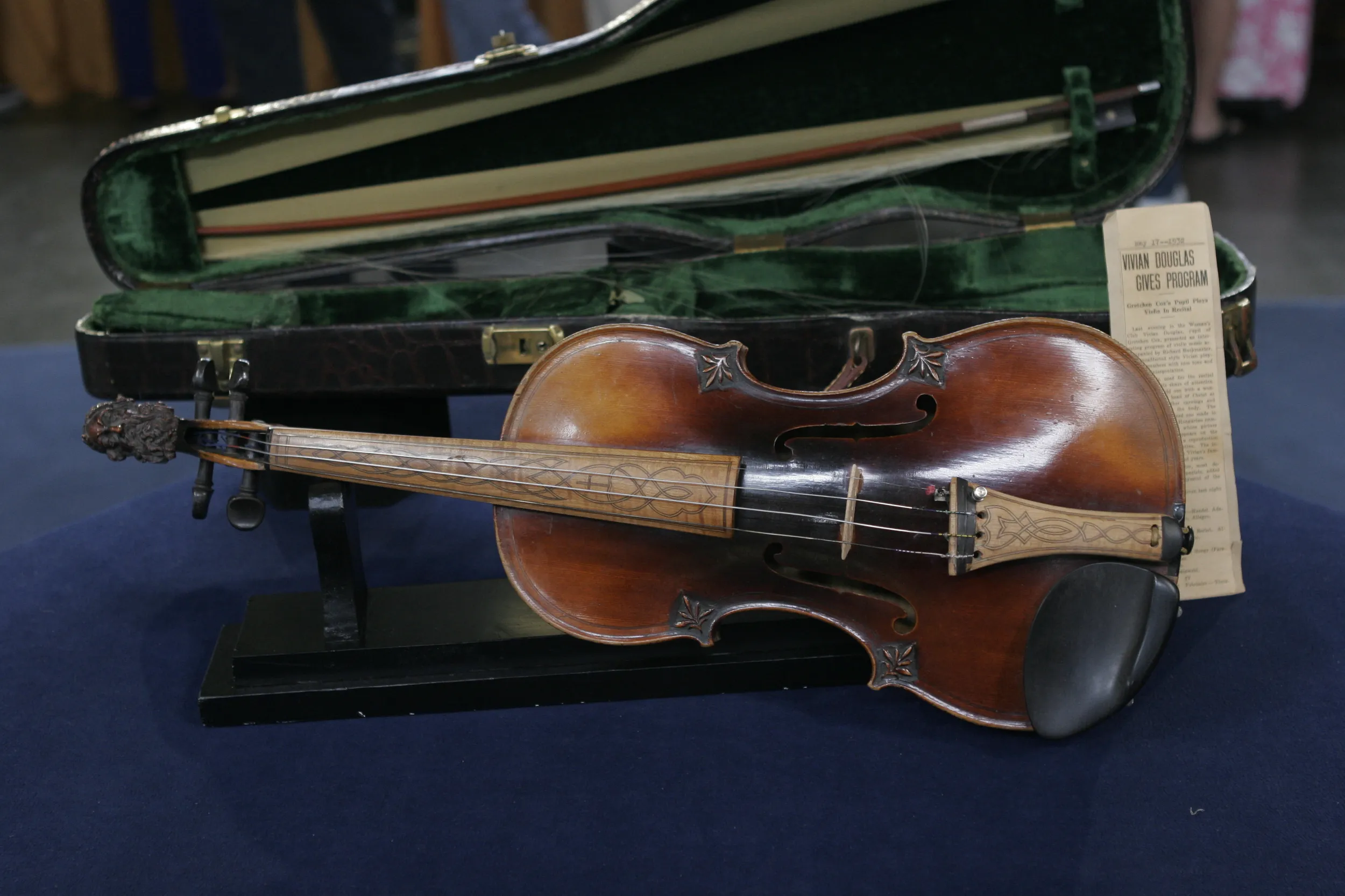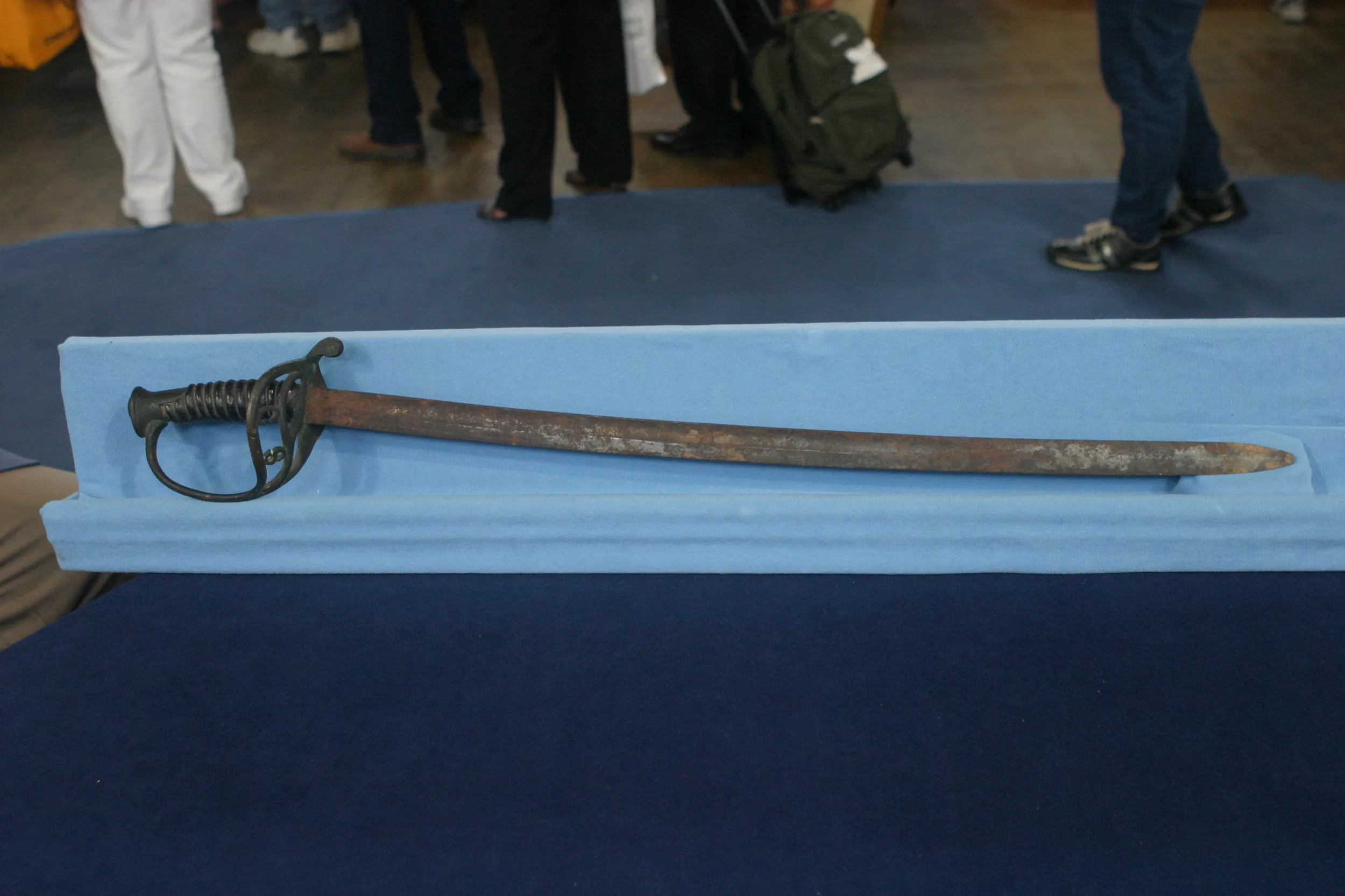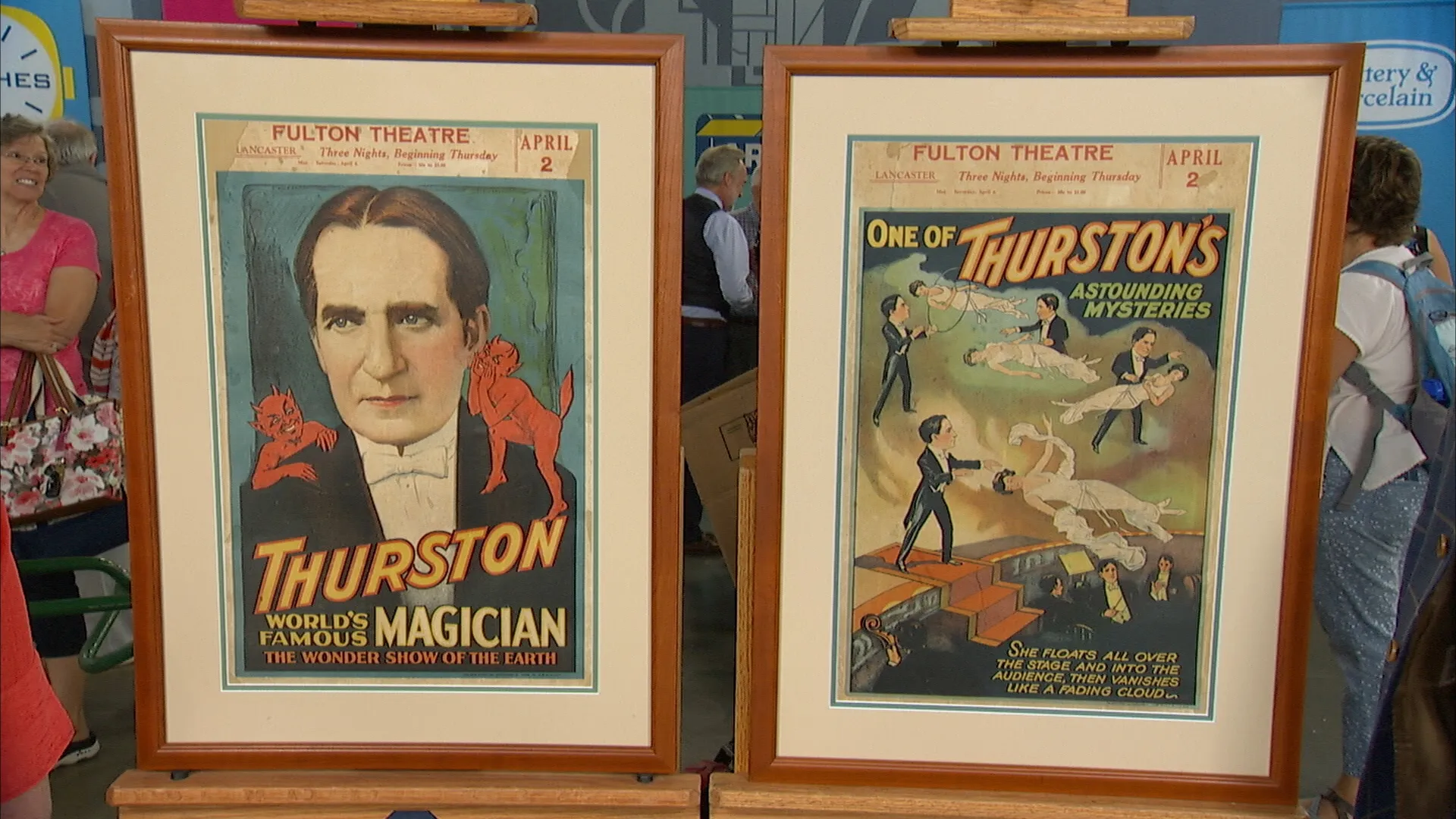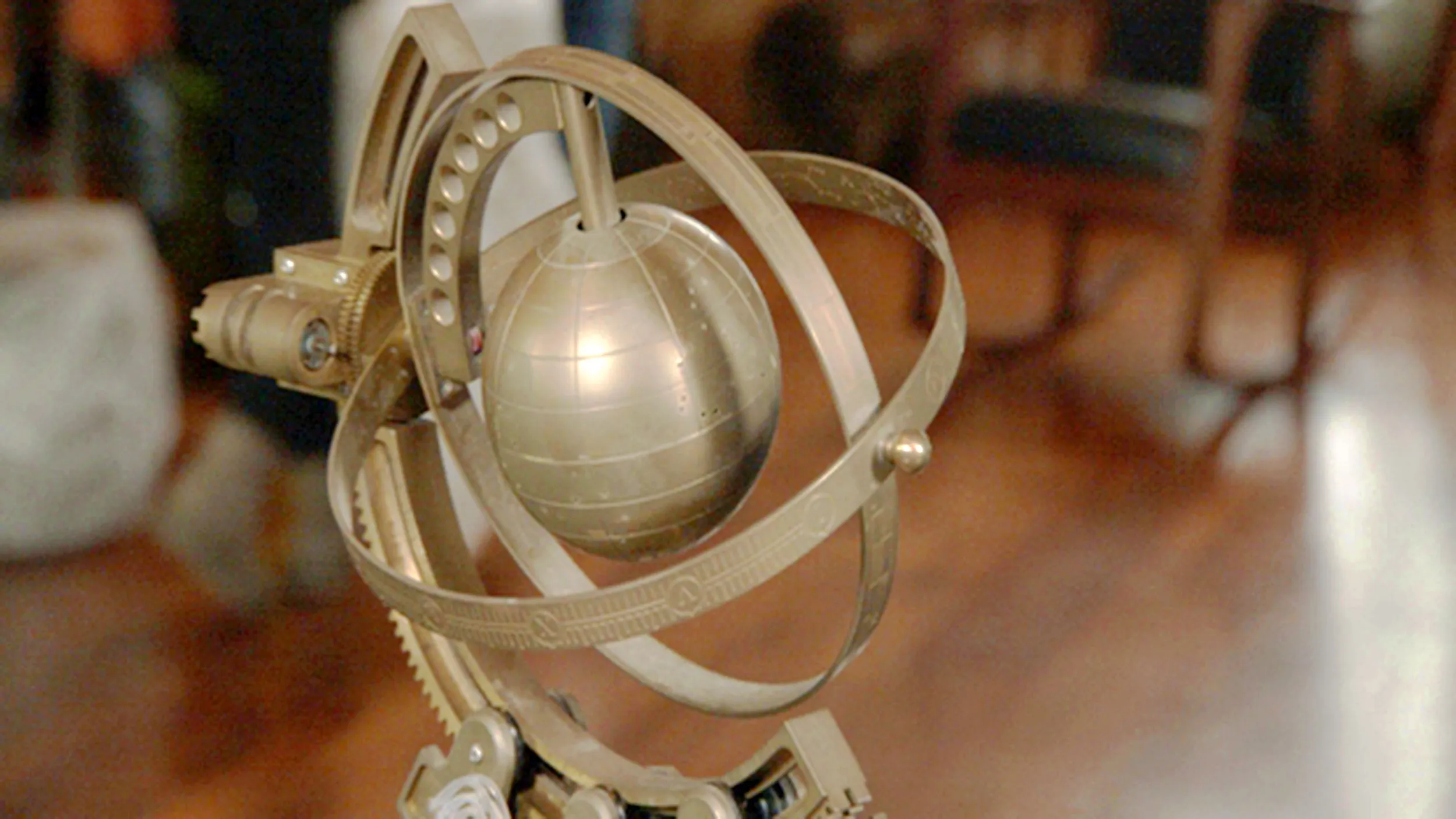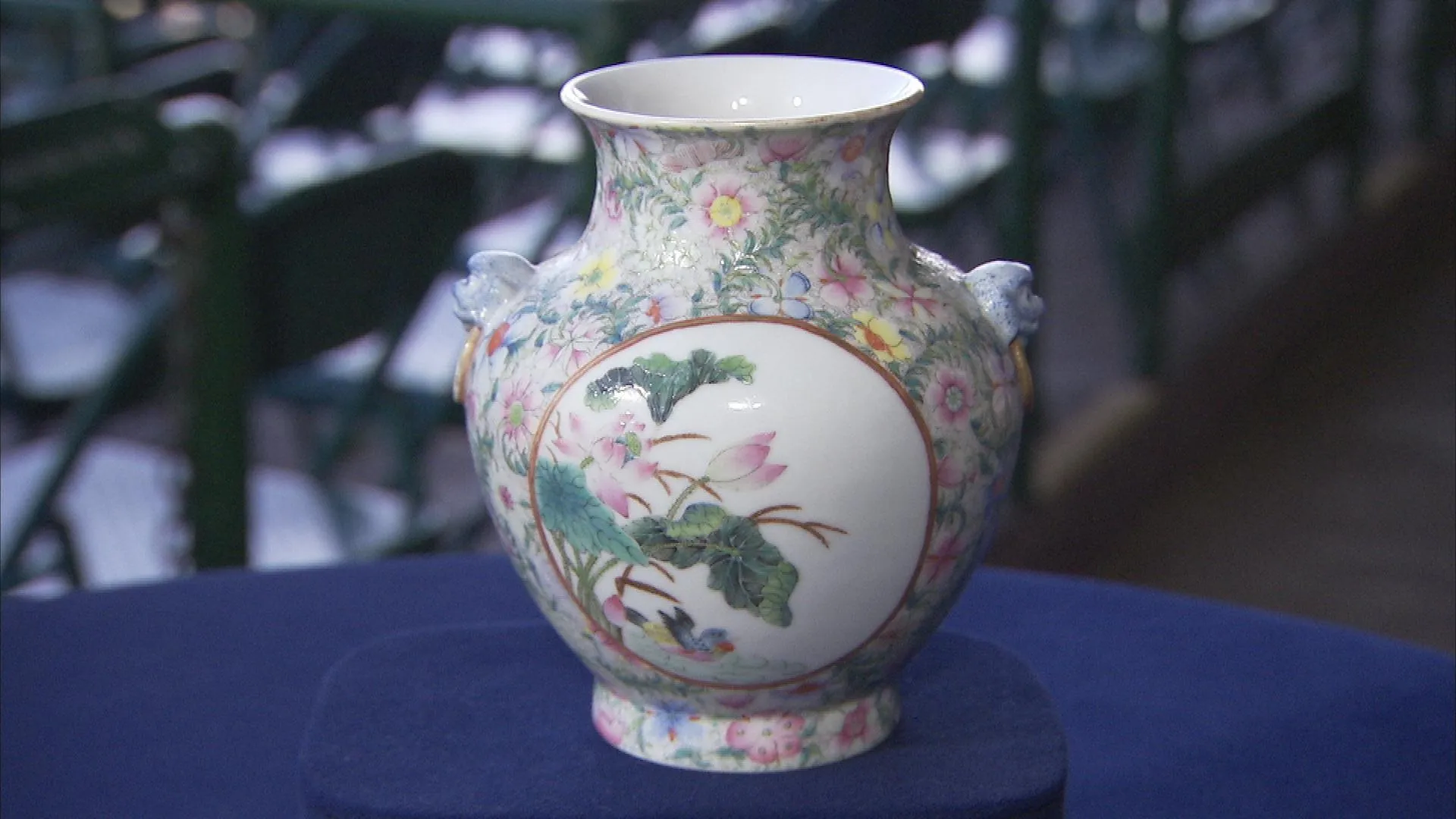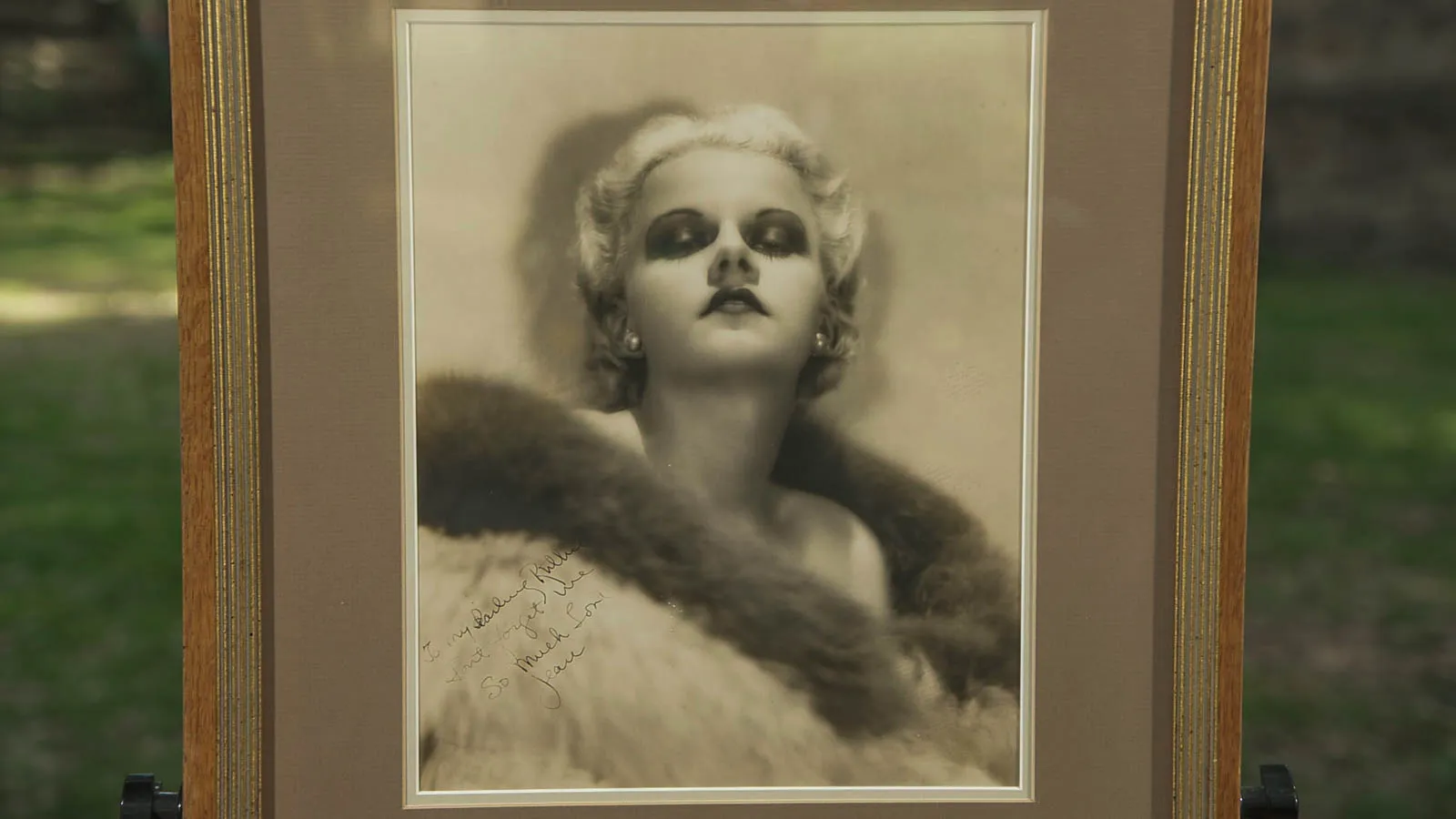GUEST: This has been in my husband's family for a long time. I know it's Native American, beaded pouch. My husband's great-grandfather had this. His origin was Denton, Texas, but I'm not sure anything much about it.
APPRAISER: It is Kiowa Indian.
GUEST: Kiowa?
APPRAISER: The Kiowa. This is a tribe from the central plains, just north of the Texas area in Indian territory, today Kansas, Nebraska. We're rather fortunate to have this particular piece here today.
GUEST: Really?
APPRAISER: It's exceptionally beautiful. There are two different types of hide here. The foundation of the pouch, which is called a strike-a-light, is commercially tanned hide. This is something that the Kiowa loved and traded to the non-natives and acquired it. It's the same leather that would have been used for a saddle or for boots. And then the fringe is deer hide. The beads are European and they're traded to the Indians. Rather wonderful detail on this. On the fringe there are tin cones wrapped around the deer hide. And then the very long fringe is twisted once, two strands, and wrapped with tin. The tin would come from salvaged food cans, ammunition cans, that sort of thing. Both of these go together. The strike-a-light, the larger pouch, would be used for fire-making implements. There would be a piece of flint, a piece of steel and a little bit of fire-making matter, fibers that would light up quickly. And then the long, narrow piece is a woman's awl case. There would be a long awl, or a perforator, and this would be used for their making of moccasins and clothing. They'd perforate the holes and then put sinew through it. The sinew, by the way, is what attaches the beads to the hide. It's nice to have both of these. These would be on a woman's belt.
GUEST: Oh.
APPRAISER: Rarely do you get the two matched together. You'll notice the blue on the side of the bigger pouch. It's the same color as the blue on the awl case. And so we know these originated together. These are quite old. These date to the 1870s. The Kiowa women had a tremendous sense of design and a fabulous sense of color. In addition, they love movement, and that long fringe would just sway back and forth as they walked. It would just be a glorious accommodation.
GUEST: I can see that.
APPRAISER: On a retail market, a collector, I believe, would be very happy to pay about $9,500 for this ensemble.
GUEST: Wow. Yeah.
APPRAISER: And possibly a bit more. If I were going to insure it, I think I would insure it for around $12,000.
GUEST: Okay.
APPRAISER: It's really a special piece.
GUEST: Well, my husband will be very happy to hear all of this.
APPRAISER: It's in great condition. It has a few little nicks on the side. Right. But essentially it's in wonderful condition. We call those little details "a no-harm nick."
GUEST: Well, Ted, this is awesome. (laughs)

